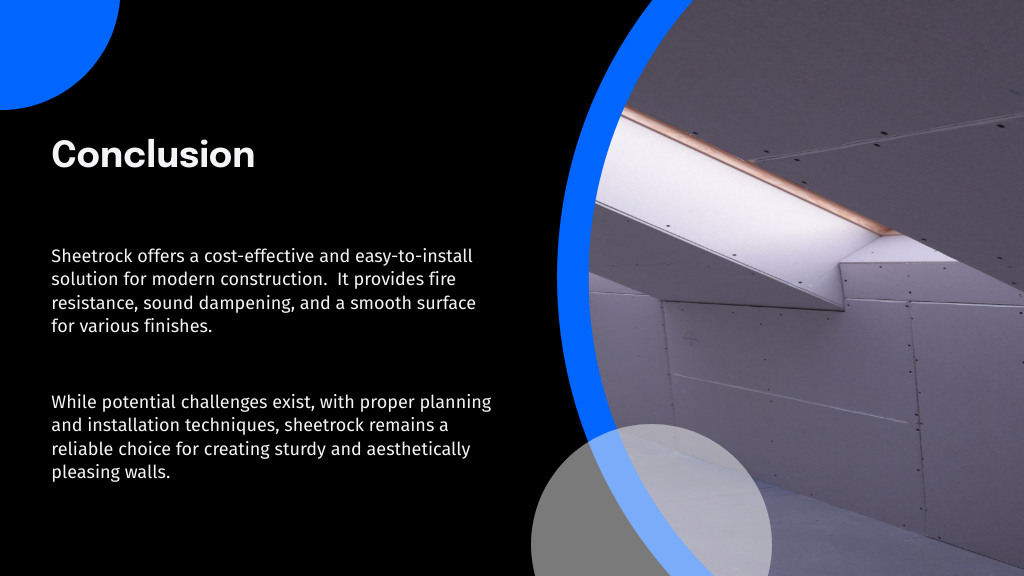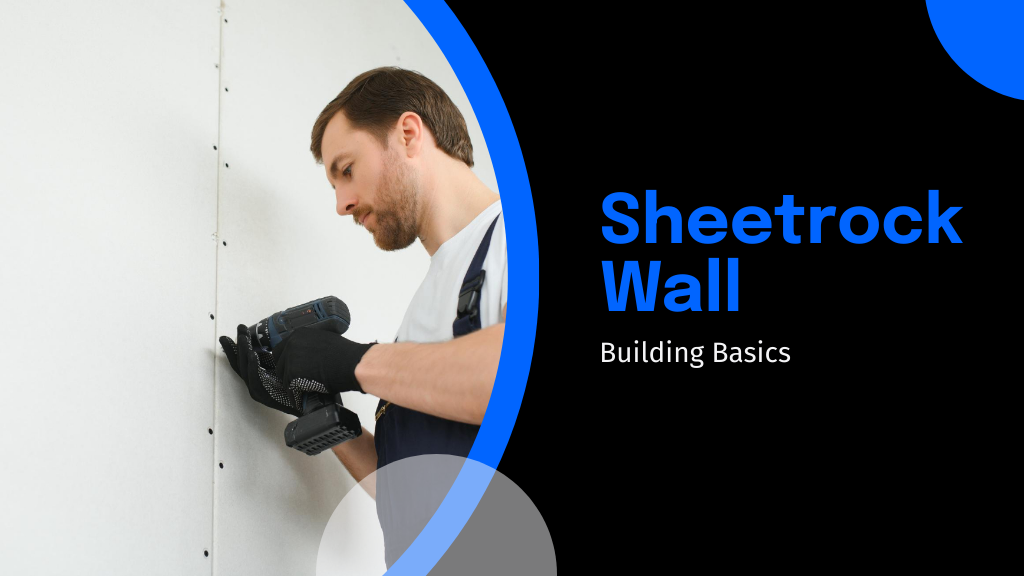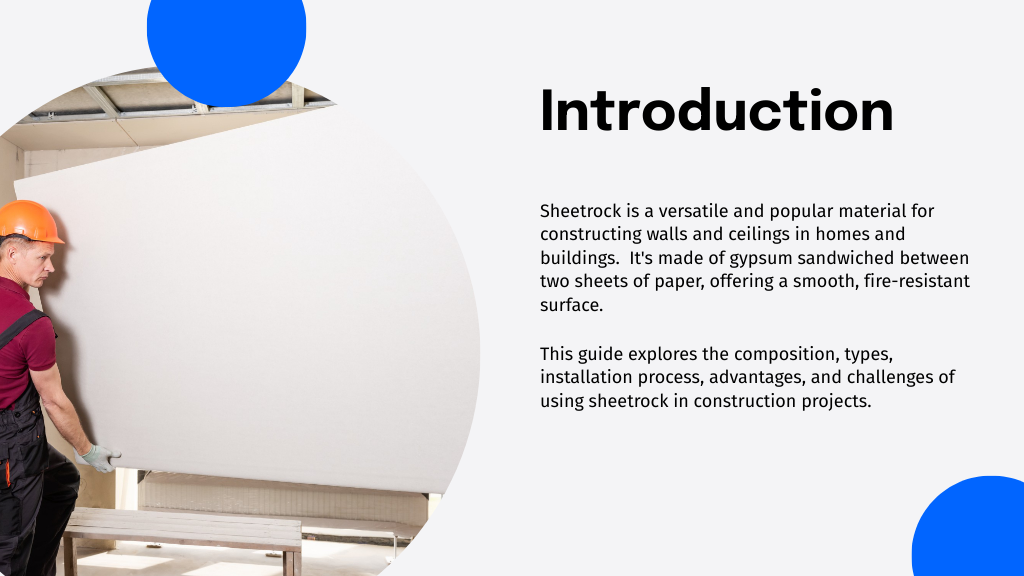
Sheetrock is a type of drywall constructed from gypsum sandwiched between two thick paper sheets, making it essential for modern building. When you're planning your next construction, consider using Sheetrock for its ease of installation and cost-efficiency. It's particularly versatile, suitable for creating smooth walls and ceilings, and offers options like moisture resistance for bathrooms and fire resistance for safety. There's more to explore on how this material can elevate your building project and overcome common challenges.
Understanding the Composition and Types of Sheetrock
While Sheetrock might seem straightforward, it's actually made up of several key components, primarily gypsum sandwiched between two thick sheets of paper.
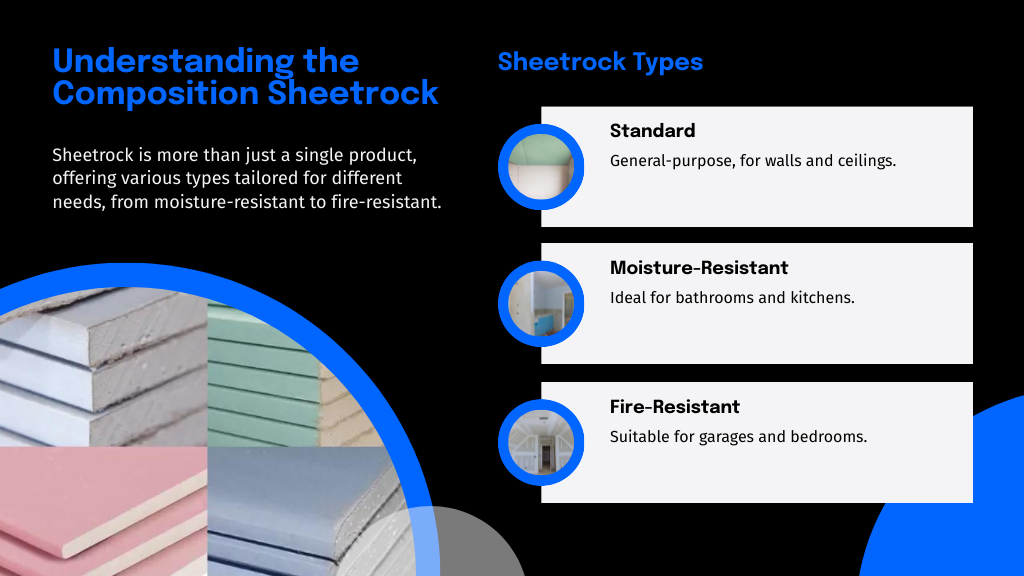
When you're learning how to do drywall, it's important to grasp that Sheetrock isn't just a single product but comes in various types tailored for different uses. For instance, there's moisture-resistant Sheetrock, ideal for bathrooms and kitchens, and fire-resistant types perfect for garages and bedrooms.
Understanding these differences is vital as they influence both the material selection and application techniques for your Sheetrock wall.
Grasp the key differences in Sheetrock types to optimize material choice and application methods for your project.
Each type has specific properties that cater to different environmental demands and safety standards, ensuring that your construction efforts aren't only efficient but also compliant with building codes.
The Installation Process of Sheetrock Walls
Once you've selected the appropriate type of Sheetrock for your space, installing it properly becomes your next essential step. First, you'll need to measure and cut the Sheetrock to fit your walls. Use a T-square and utility knife for precision.
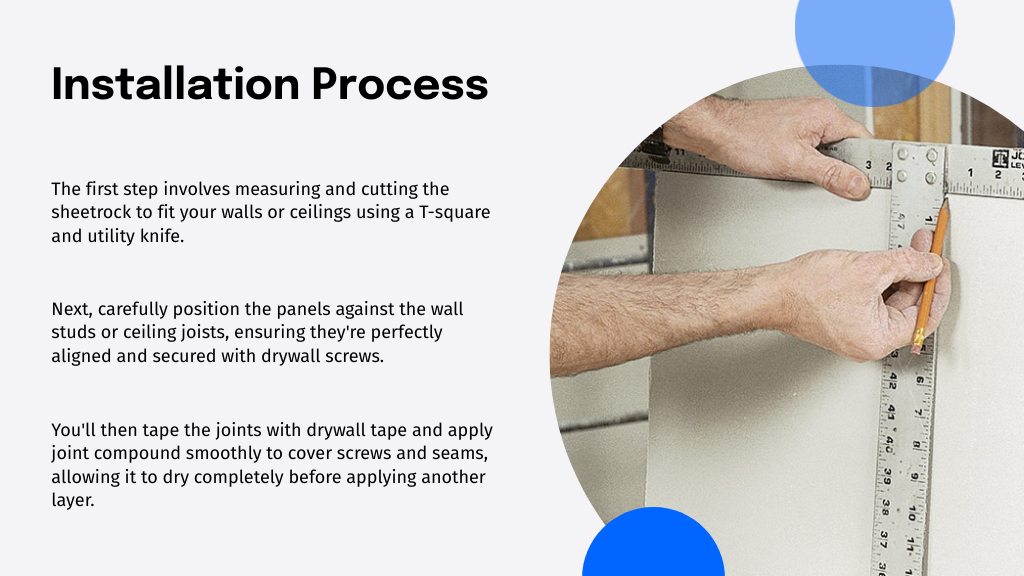
Next, position the panels against the wall studs, ensuring they're perfectly aligned. Secure them with drywall screws, spacing them about 16 inches apart along the studs.
You'll then tape the joints using drywall tape and apply joint compound smoothly to cover screws and seams. Allow it to dry completely before applying another layer.
Sand it down for a smooth finish, preparing the surface for painting or wallpapering. With these steps, you'll have a professionally finished Sheetrock wall.
Advantages of Using Sheetrock in Building Projects
Sheetrock offers several benefits when used in building projects, particularly its cost-effectiveness and ease of installation.
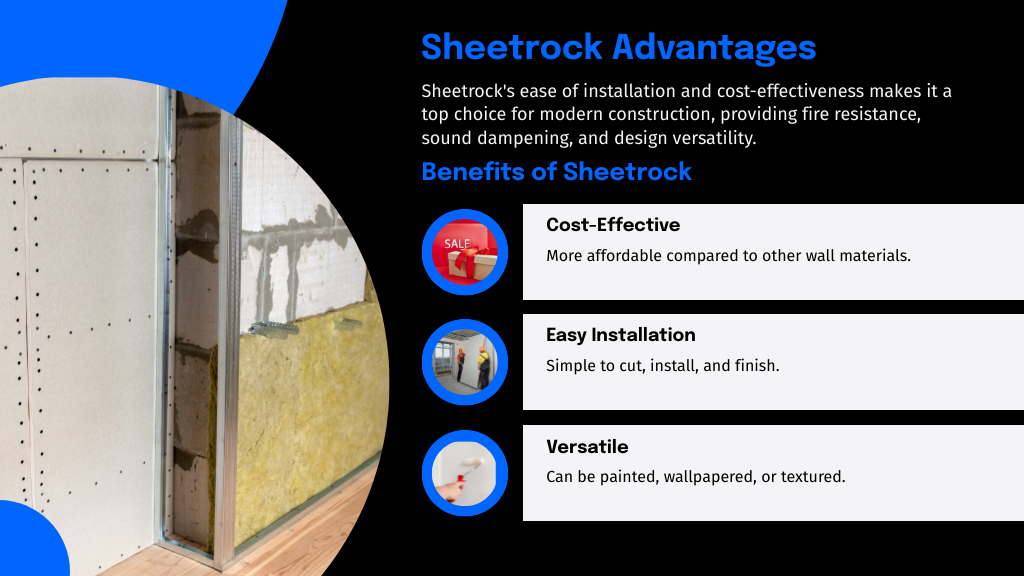
You'll find that it's not only affordable but also simplifies the construction timeline due to its straightforward installation process. This material adapts well to various design aesthetics, making it a versatile choice for your walls and ceilings.
Here are the key advantages:
- Quick Installation: Sheetrock panels are large, covering more area with fewer pieces than many alternatives.
- Fire Resistance: Certain types of Sheetrock are treated to resist fire, enhancing the safety of your structure.
- Sound Dampening: It helps in reducing noise transmission, creating quieter living and working environments.
These features make Sheetrock an attractive option for both new construction and renovations.
Common Challenges and Solutions in Sheetrock Installation
Despite its many benefits, you might encounter some challenges when installing Sheetrock. One common issue is improper joint treatment, which can lead to visible seams and cracks. To combat this, you'll need to apply joint compound smoothly and allow ample drying time between coats.
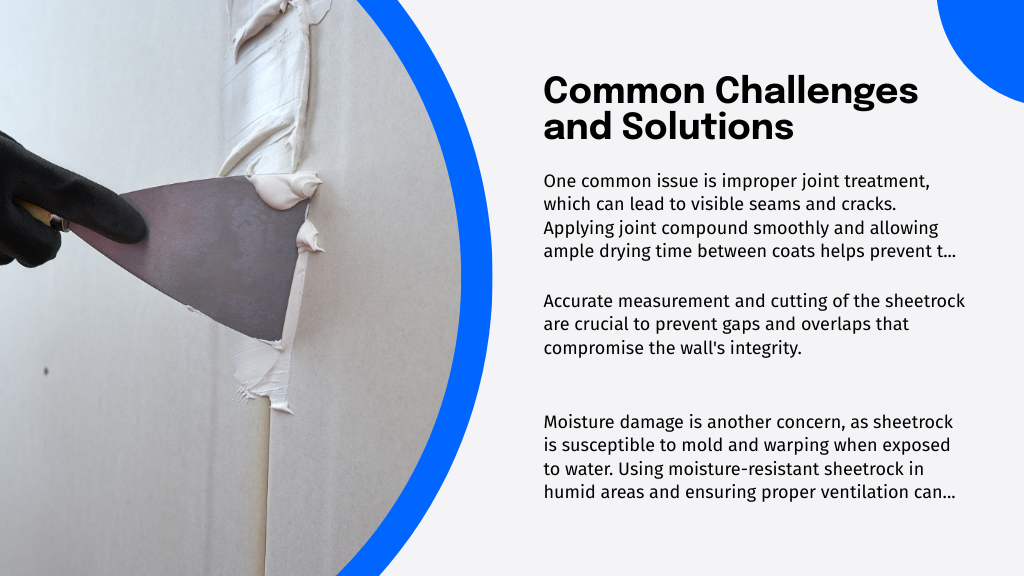
Ensure seamless Sheetrock installation by applying joint compound carefully and allowing sufficient drying time between coats.
Additionally, it's essential to accurately measure and cut the Sheetrock to prevent gaps and overlaps that compromise the wall's integrity.
Another challenge is dealing with moisture damage. Sheetrock is susceptible to mold and warping when exposed to water. Using moisture-resistant Sheetrock in high-humidity areas, such as bathrooms and kitchens, can prevent these issues.
Ensuring your space is well-ventilated will also help maintain the longevity and appearance of your Sheetrock walls.
Comparing Sheetrock to Other Wall Construction Materials
While Sheetrock is a popular choice for wall construction, it's important to evaluate how it stacks up against other materials like plaster, wood panels, and concrete.
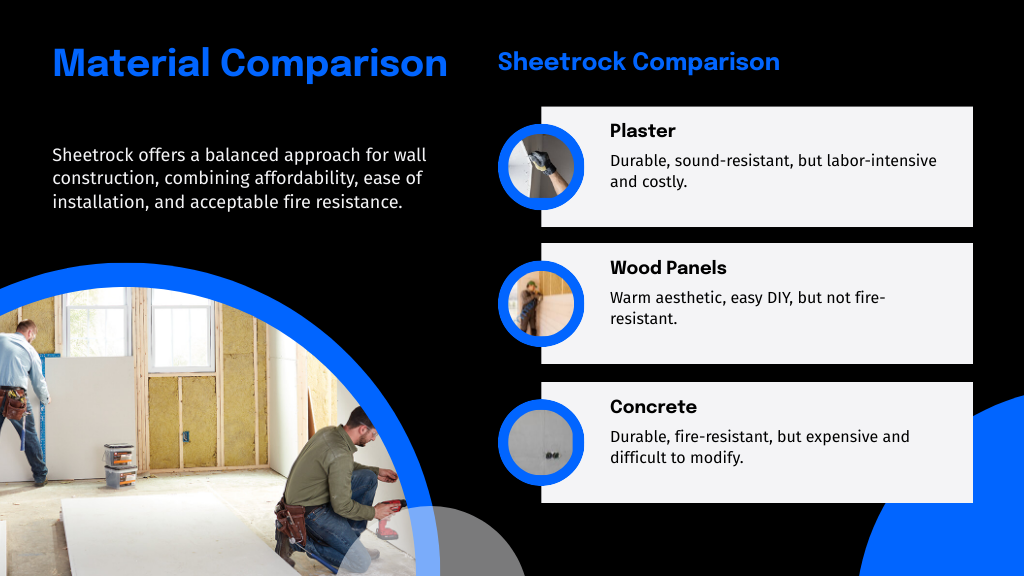
You'll find that each material offers unique benefits and drawbacks depending on your project's needs.
- Plaster: Provides a sturdier and more sound-resistant wall, but is more labor-intensive and costly to install compared to Sheetrock.
- Wood Panels: Offer a warm, aesthetic appeal and can be easier to install for DIY projects. However, they aren't as fire-resistant and can warp or rot over time.
- Concrete: Extremely durable and fire-resistant, making it ideal for structural walls. Yet, it's less versatile for interior aesthetics and considerably harder to modify or repair than Sheetrock.
Conclusion
As you gaze around your newly sheetrocked room, imagine the smooth, sturdy walls painted in your favorite hues, transforming it into your personal haven. Sheetrock, with its quick installation and cost-effectiveness, wraps your space in reliability. Yet, remember, amidst occasional hiccups like cracking or moisture issues, solutions are always at hand, ensuring your walls stand resiliently. So, whether contrasting with brick or wood, sheetrock holds its own, embedding your home with warmth and structure.
